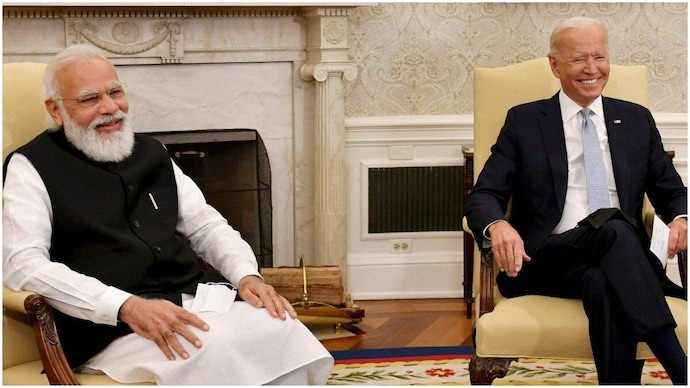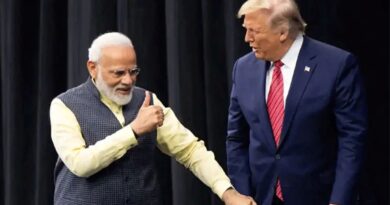The Rise of Narendra Modi: A Leader for Modern India
Introduction
Narendra Modi, the current Prime Minister of India, has achieved massive popularity and success over the years. From humble beginnings, Modi rose up the ranks through his compelling leadership and astute political skills. Born in 1950 in the state of Gujarat, Modi had a rather ordinary childhood. He helped his father sell tea at the local railway station and had a keen interest in debates and discussions. Modi initially joined the Rashtriya Swayamsevak Sangh (RSS), a right-wing Hindu nationalist organization, and eventually moved on to join the Bharatiya Janata Party (BJP).
He became the Chief Minister of Gujarat in 2001, a position he held for 12 years. During his time in office, he focused on infrastructure, education, and economic development. His policies helped Gujarat become one of the most prosperous states in India. Modi’s political journey has been quite impressive, to say the least. From being a humble tea seller to rising up the ranks and become the Prime Minister of India twice, his journey serves as an inspiration to many. His leadership abilities and charisma have helped him connect with people from all walks of life.
Through his initiatives like Digital India, Swachh Bharat Abhiyan and Make in India, Modi aimed to bring about a transformational change in the country. His foreign policy approach has also been successful in strengthening India’s relationships with other countries. Despite some controversies and criticisms, Modi continues to enjoy massive popularity in India and is regarded by many as a leader for modern India.
Modi as Prime Minister
Modi as Prime Minister Love him or hate him, you can’t ignore him. Narendra Modi, a prominent figure in Indian politics, secured a landslide victory in 2014 when he became the Prime Minister of the country. Since then, he has been re-elected for a second term in 2019. While his leadership has been praised, it has also drawn sharp criticisms from across the political spectrum. Election victory in 2014 Modi’s rise to power was not a fluke. He tirelessly campaigned across the country, holding rallies in towns, villages, and even remote areas.
His charisma and leadership qualities won him the hearts of millions. He promised development, economic growth, and opportunities for all. His party, the BJP, swept the elections and won a massive majority. Key achievements in the first term Modi’s first term as the Prime Minister saw several significant changes in Indian politics. He introduced several initiatives, including Swachh Bharat Abhiyan, Digital India, Make in India, and Skill India. His government launched many ambitious programs such as Jan Dhan Yojana, Atal Pension Yojana, and Ayushman Bharat.
These programs aimed to strengthen the economy, generate employment, and provide better healthcare. He also implemented the Goods and Services Tax (GST), which brought uniformity to the tax structure across the country. Controversies and criticism Modi’s leadership has come under intense scrutiny for his alleged involvement in the Gujarat riots in 2002. Many accuse him of promoting Hindu nationalism and ignoring the religious minorities. His government’s decision to revoke the special status of Kashmir caused unrest in the region. His crackdown on NGOs and civil society groups has been criticised. Re-election in 2019 Modi’s second term has been marked by his government’s crackdown on dissent. The controversial Citizenship Amendment Act (CAA) triggered massive protests across the country.
His government’s decision to implement the National Register of Citizens (NRC) was also met with opposition. His handling of the COVID-19 pandemic has received mixed reviews, with some praising his leadership skills and others criticising his government’s handling of the crisis. Modi’s response to COVID-19 pandemic Modi’s government implemented a nationwide lockdown to curb the spread of COVID-19. The lockdown brought the country to a standstill, with millions losing their livelihoods. The government also launched several economic relief packages to support those affected by the pandemic.
However, the unplanned lockdown and migrant crisis exposed India’s weak public health infrastructure. Modi’s leadership style Modi’s leadership style is often described as authoritarian. He prefers an active role in decision-making and governance. His charismatic personality and social media skills have helped him gain a massive following. He has regularly engaged with people through his radio program ‘Mann ki Baat” and his ‘Chai pe Charcha’ sessions, aimed at listening to people’s grievances. Criticism of Modi’s leadership Modi’s government has been criticised for its lack of transparency and accountability.
His government’s clampdown on freedom of speech and press has been condemned by many. The country has witnessed an alarming rise in hate crimes and religious intolerance under his leadership. His government’s environmental policies have also faced severe criticism. In summary, Modi’s leadership has been mired in controversy, and his governance has been both praised and criticised.
While his government has introduced several transformative initiatives, it has also created division and dissent. India’s future under Modi’s leadership remains uncertain, and only time will tell if his ambitions and vision will bear fruit.
Impact of Modi's leadership
Modi’s impact on India can be seen in various sectors, ranging from economic growth to technological advancements. His policies and initiatives have aimed to make India a world leader in different fields. Under Modi’s leadership, India’s GDP has grown considerably, making it one of the world’s fastest-growing major economies. The ‘Make in India’ initiative and the introduction of a simplified tax system have helped to attract foreign investment.
The Digital India campaign has had a significant impact on the technology sector, making India a major hub for technology development. Modi’s foreign policy has been characterized by extensive tours to other countries, a move aimed at fostering ties and cooperation. His efforts have focused on bolstering India’s standing on the world stage. The ‘Neighbourhood First’ policy and the ‘Act East Policy’ have aimed to strengthen ties with neighbouring countries and improve trade. The Prime Minister has also focused on initiatives for social upliftment and welfare, such as the ‘Swachh Bharat Abhiyan’ for cleanliness and sanitation, the ‘Ayushman Bharat Yojana’ for universal health coverage, and the ‘Beti Bachao, Beti Padhao’ campaign for girl child education.
Finally, Modi’s technological initiatives have aimed to make India a major player in the digital space. The ‘Digital India’ program has increased access to technology and the internet in rural areas, opening up opportunities for growth and development. The ‘Skill India’ campaign has helped to improve the job prospects of many Indians by providing vocational training and skill development. In conclusion, Modi’s policies and leadership have had a significant impact on India’s growth and development. The country has made remarkable progress in different sectors under his leadership, and India is poised to become a major world power in the near future.
Modi's leadership style
Modi’s leadership style is often a topic of discussion among people. Some consider him to be authoritarian, while others see him as a democratic leader. Regardless, there is no denying that Modi possesses charismatic leadership qualities that make him stand out among his political contemporaries. One of Modi’s strongest suits is his communication skills. He has effectively used social media platforms to reach out to millions of people in India and around the world. His ability to connect with people from different walks of life is unmatched. On the other hand, some people criticize Modi’s leadership style, claiming that he has an authoritarian streak. They point to his handling of communal tensions and religious conflicts, as well as his government’s policies and decisions that they feel are detrimental to the environment.

Despite all of this, one cannot overlook Modi’s impact on India’s growth and development policies. His initiatives for social welfare and upliftment, as well as his promotion of digital India and technological advancements, have contributed significantly to the country’s progress. In conclusion, Modi’s leadership style is an interesting mix of authoritarian and democratic traits, with a heavy emphasis on charisma and communication. While he faces criticism from some quarters, his policies and initiatives have helped India become a more prosperous and forward-thinking nation.
Criticism of Modi's leadership
Criticism of Modi’s leadership: While Narendra Modi has undoubtedly brought about positive change in India, there are also valid criticisms of his leadership. Communal tensions and religious conflicts have increased under his rule, with minority groups feeling increasingly marginalized. Freedom of speech and human rights concerns have also come to the forefront, with journalists and activists facing repression. Environmental policies and sustainable development have not been prioritized, with the government pushing for economic growth at the expense of the environment. Modi’s government has been accused of authoritarianism, with the Prime Minister exerting a great deal of control over his party and the media.
Critics argue that Modi’s charismatic leadership has been used to paper over these concerns, with his frequent use of social media and mass rallies masking deeper issues. Despite these criticisms, however, Modi remains an immensely popular figure in India, with many seeing his leadership as transformative for the country.
Conclusion
After analyzing the leadership of Narendra Modi, it is clear that he has made significant progress through his tenure as the Prime Minister of India. His focus on development policies, foreign relationships, and social welfare initiatives have led to impressive economic growth and technological advancements in India. However, Modi has also faced criticism for his authoritarian leadership style, communal tensions, and human rights concerns. Looking towards the future, there is no doubt that Narendra Modi will continue to play a crucial role in shaping India’s destiny. His leadership has provided hope to India’s youth, and his focus on development and innovation has the potential to make India a global powerhouse.
In conclusion, Narendra Modi’s leadership has been a mixed bag of successes and controversies. However, it cannot be denied that he has bought a new sense of pride and aspiration to the people of India, and paved a path for future growth. Only time will tell what lies ahead for India under the guidance of Narendra Modi.

